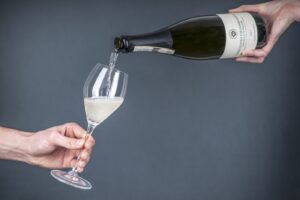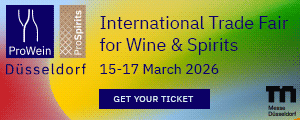A, for acquisitions, like Russian Standard Corporation, a leading manufacturer of Russian Vodka that acquired 70% stake in Gancia Spa, and the U.S. giant Constellation Brands that acquired 100% stake in Ruffino. B, for biodynamic and / or organic means wines obtained with these methods and are on the top of wine lovers’ “wish list” who were more and more sensitive to environmental problems in 2011 and at the same time started discussions between experts and non on the pros and cons of these techniques. So from A for acquisitions to Z for zoning, here is the “Alphabet of Italian Wine”, a quick overview of the salient wine facts, events, trends and tendencies in 2011, to remember what happened and what issues are (or should be) on the carpet for discussion, according to WineNews.
Continuing on, C is for climate, or rather climate change, the 2011 vintage with its bizarre weather was the umpteenth epiphenomenon. An event, climate, that to many seemed a simple exception that should confirm a rule, which instead now seems permanently compromised. It is the most challenging problem the wine world must face in the near future. D, for dealcoholization. We have been hearing that this is one of the possible remedies for high alcohol content in wines because of the hot temperatures during grape harvesting. It is also the intent of some Spanish and Australian companies (for now in the minority) to produce wines with zero or almost, alcohol content. So, the raw material used to make wine that historically has been grapes, could be replaced by wine itself, adding yet another wrench in the affirmation of the wine industry. E, for export. 2011 was another extraordinary year for Italian wines outside of Italy. Extraordinary numbers, very close to a real record: 17.5 million hectoliters (12.6% compared to 2010) and a value of more than 3 billion euros (13.5% compared to 2010). F, for Fine Wines: in these times of global financial crisis, investments in this asset have been greeted as one of the last saving anchors. Is it true, though? G for guides. In 2011 guides were on a downfall, but their assessments always end up being the number one discussion between wine fans and experts. And, they continue to not agree. What is the result? The main wine guides awarded only one Italian wine: from Puglia, Gianfranco Fino’s 2009 Primitivo Es. H, for hectare. The “war” over planting rights caused by the CMO clause that set the liberalization of vineyard planting for 2014, has united the most important wine producing countries (Italy and France are the leaders) that are absolutely against this provision, first and foremost because of probable over production. I, for IMU. Even agriculture has to make some sacrifices in this historical and critical moment in Italy. So, here’s the notorious IMU (Land Tax) also for farmhouses and production structures like cellars and stalls. It’s a big blow to Italian agriculture, mainly in the territories where cultivations have a low added value.
But, where high value goods are produced, like wine, this resource could be positive for the farms. L is for lightness. First in taste, as the tendency to appreciate easy to drink wines seems to be the trend (at least in the world of critics and more expert fans). But also a lighter general approach, more theory than practice. Well, anyway, we’re talking about a glass of wine! M is for mescita or wine by the glass. Wine by the glass is more and more widespread. The crisis is looming, the Breathalyzer too, so wine by the glass allows fans to drink also fine wines that they otherwise would not drink. It’s also a solution for the drop in consumption and it is made possible by technology and more functional and accessible machinery, like “Winefit One”, the Italian made all-in-one wine dispenser, which thanks to special bottle corks, can preserve the wines even in bars that until today couldn’t offer quality wines, due to space. N, for news. There is a myriad of sites, blogs, social networks, magazines, guides and more that circulate news all over the globe about the wine world. Especially the web universe, where WineNews has been active for a long time and now wineries have begun to get interested and online. O, for OCM (CMO): discussed, controversial, but still an important tool for the improvement of the wine industry and its supply chain, capable of providing opportunities and maybe even showing the way to a sector that needs renewal, starting from getting rid of economic welfare. P is for “Preparers of grapes”. Since technology dictates the rhythms of grape cultivations, some people, instead have decided to keep the traditional techniques and knowledge: the duo from Friuli Marco Simonia and Pier Paolo Sirch who insist that manual pruning is the only method that supports the physiology of the vine. They also use some old, abandoned cultivation techniques, adapted to modern times, like some antique forms of vineyard cultivation, recovering old vineyards and ancient grape varieties. Their innovative approach has today become the unique “Italian School of Vine Pruning”, which travels and educates in the main Italian wine regions. Their vine pruning method has convinced more and more wineries starting from Caprai in Umbria, San Leonardo in Trentino, Feudi di San Gregorio in Irpinia, Angelo Gaja in Piedmont and Vittorio Moretti in Franciacorta and the Montalcino terroir is also beginning to think about using this method.
Q is for quotations. Italian wine quotations are getting higher and higher and becoming the real stars of international auctions (the most recent auction held on November 25th was Christie’s in Hong Kong, where Ornellaia’s Masseto and Antinori’s Tignanello beat out even the French wines). And even Italian auction houses are keen on auctions in Asia. So, the Roman auction house, specialized in wine, Gelardini & Romani went to Hong Kong on November 19th to auction off 100% Made in Italy wines and made over 300.000 euros. R is for recognition. It may not be the only indicator of the state of Italian wine, but it is a significant one. In 2011, confirmation of the appeal of Italian wine in the world came from the top international wine magazines: 1 bottle out of 5 on the “Wine Spectator” “Top 100” list is Italian (for a total of 20 bottles) and two are in the top ten (2006 Brunello di Montalcino of Campogiovanni at number 4 and Barolo Ciabot Mentin Ginestra 2006 of Domenico Clerico at number 8).
On the ”Top 100” of “Wine Enthusiast”, Italy did even better with Frescobaldi’s Chianti Rufina 2007 Nipozzano Reserve, and Castello Banfi’s 2007 Excelsus at number 7 and 17 wines out of 100 on the list. S is for sfuso (bulk wine). Not only because it is a positive sign from the top Italian denominations where prices of bulk wine (on chain trading) are back to prices that just one year ago seemed impossible to reach, but also as wine that helps exports, 8.5 million hectoliters in 2011, close to the maximum. T is for terroir, for wine of course, but also for the earth (terra) the basic element from which everything grows. The population is increasing; big Countries are buying up pieces of continents (especially Africa where yet another human tragedy occurred because of the rich exploiting the poor). U is for union. A hope, more than a fact or a debate in 2011, because “unity is strength”; especially in times of crisis and to renew a cliché that really isn’t one. Unity in collaborating, of course, but also in new ways to unite companies that use the same services so they can reduce costs. Unity in denominations, where big brands can “pull along” the small ones that will in turn support them in the quality area. Union in promotion abroad that is still too split up and therefore not effective. V is for vine, even better if it is antique. The slow but relentless loss of appeal of international varieties continued in 2011, even though the markets, especially the newly opened ones, did not seem too interested in traditional varieties, at least for the moment. Z, for zoning. This has been a marginal issue also in 2011 but it could, if dealt with seriously, give new vigor to many Italian denominations, even some of the famous ones. This is a wish, more than a fact, for the new year.
Copyright © 2000/2026
Contatti: info@winenews.it
Seguici anche su Twitter: @WineNewsIt
Seguici anche su Facebook: @winenewsit
Questo articolo è tratto dall'archivio di WineNews - Tutti i diritti riservati - Copyright © 2000/2026








































































































































































































